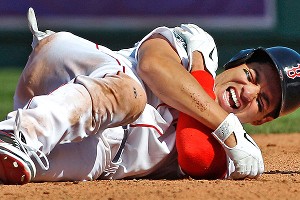
Sandusky has already met Justice. And Paterno has already met his Maker. Paterno's legacy is tarnished in the eyes of most people. Only a few Penn State cultists cling to the idea of JoePa as a great man. Some of the other PSU officials involved will likely face perjury charges. It will also be quite difficult for them to find a job at another school.
What about the program, though? What would constitute Justice for the football team that was placed on so high a pedestal that pedophilia was ignored?
Some have suggested the "Death Penalty," which would ban the existence of the team for a period of time. SMU received the "Death Penalty" when their rampant compensation for athletes was revealed. And surely this is worse than any NCAA violation.
That's a bit harsh to me. Not that I don't like the idea of being harsh to PSU, but I prefer a punishment that doesn't allow Penn State any sympathy. I can already see ESPN lauding Penn State's inevitable recovery from the "Death Penalty," with stories about the resiliency of the institution.
The "Death Penalty" would also be over too quickly. It's a very harsh punishment but it only lasts 1 or 2 years, I prefer a punishment that lingers on. Just as Sandusky was allowed to linger at Penn State.
The "Death Penalty" would not destroy Penn State football. The program would return to prominence shortly after it was born again. It's in a top league, has good facilities, has history, is nationally prominent, and is in a good geographic location for recruiting. It would be a premier program shortly after resurrection.
Instead, Penn State football should be banned from post-season play. No bowl games. No Big Ten title game. For at least 5 seasons.
They should have their scholarship limit severely reduced. From 85 to 50 (or fewer), for 6 years. After that, they should be allowed only 70 scholarships for 4 years.
All current players would be given the option to transfer.
What I would like to see is an extended period of Penn State football being a second-tier team. I want to see them lose recruits to Miami (Ohio). I want to see them get blown out by Northwestern.
I want to see the program that Paterno, Spanier, Curley, and Schultz tried to preserve reduced to mediocrity. I want their efforts to protect Penn State football to wind up hurting Penn State football.
That would be Justice.

